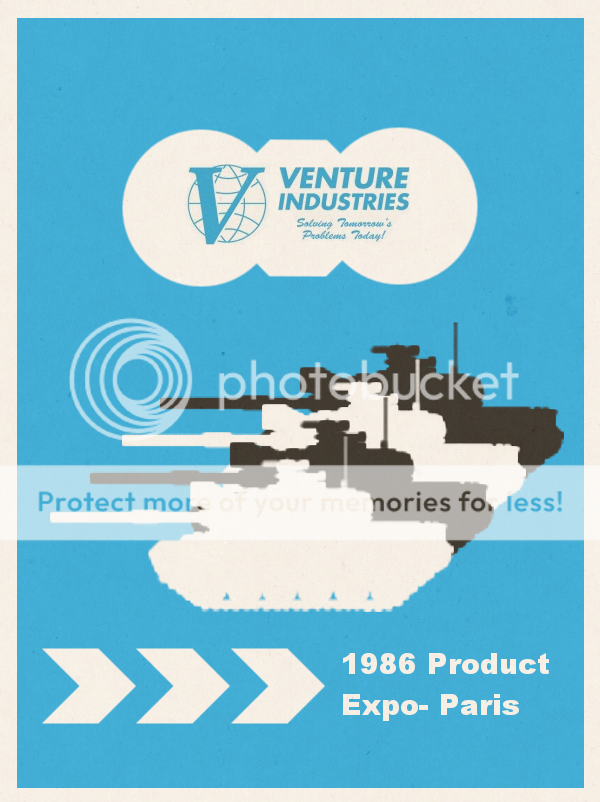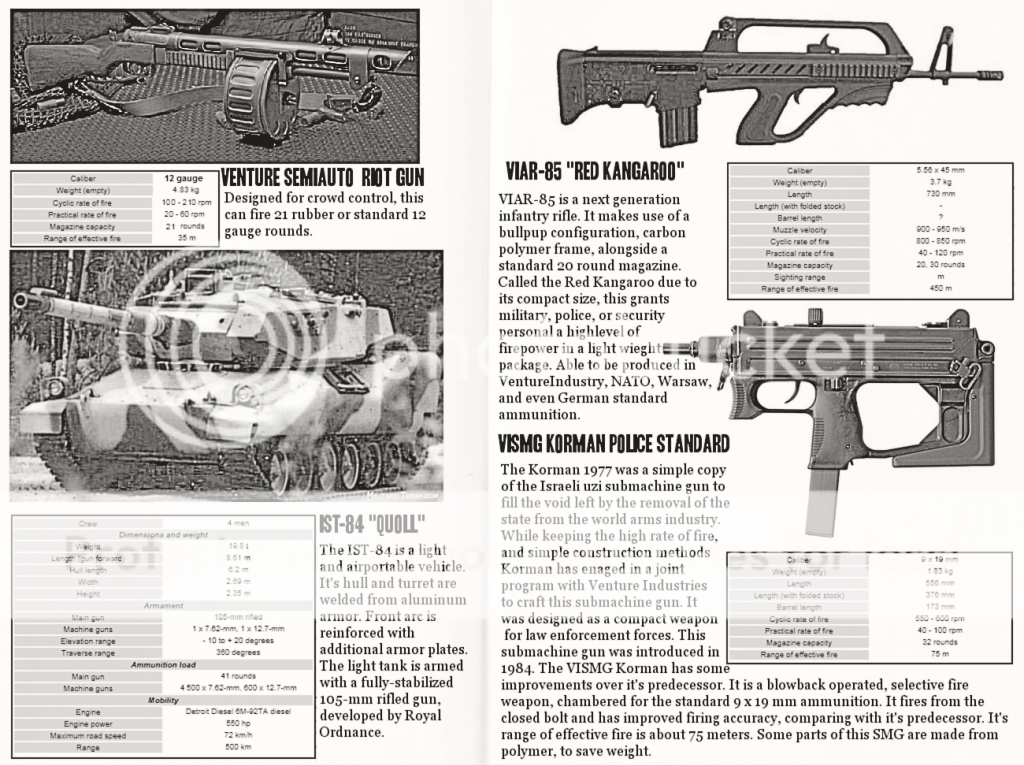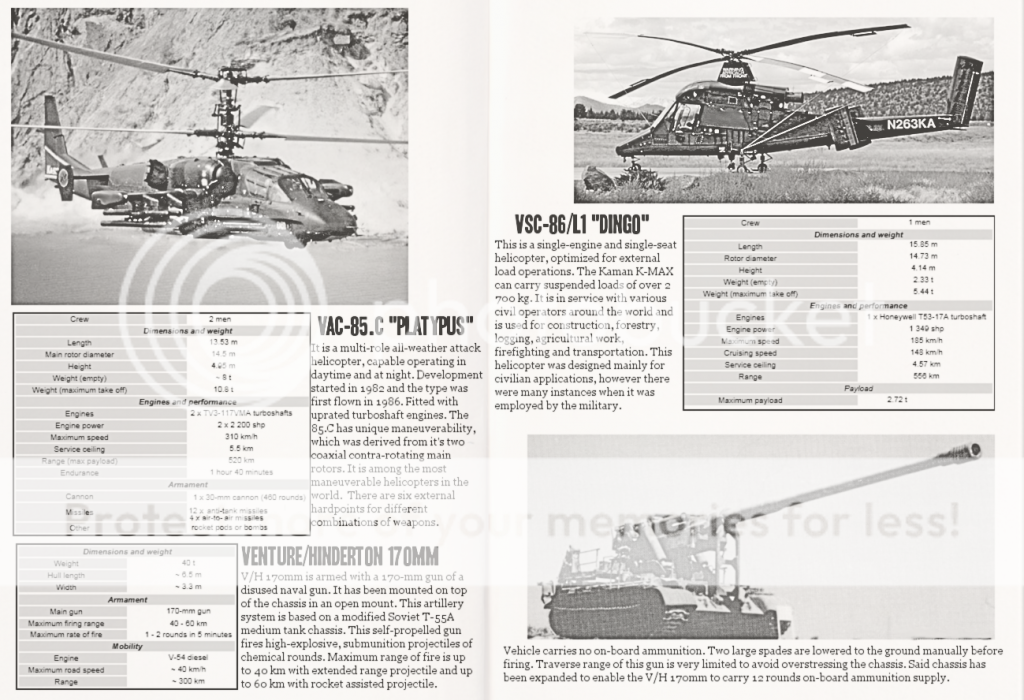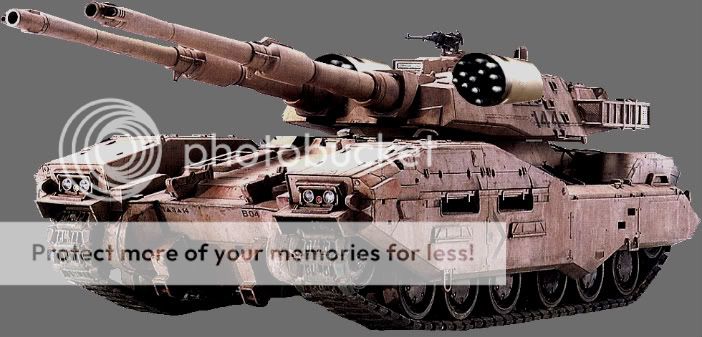You are using an out of date browser. It may not display this or other websites correctly.
You should upgrade or use an alternative browser.
You should upgrade or use an alternative browser.
Alternate Weapons of War thread...
- Thread starter Franz Josef II
- Start date

Before the Rifle Wars, the Drow did not make much use of firearms. While they were fairly keen on cannons as siege and naval weapons, hand held gunpowder weapons were largely overlooked. The Drow had no shortage of individuals skilled with longbows, which could have their effectiveness improved with a variety of spells and had a higher rate of fire than an Arquebus, while still being able to fire in rain (a fact which had been taken advantage of by Drow Elvish armies on several occasions). In recent centuries several Drow States issued some of their Janissary slave soldiers matchlocks and a few times wheellock pistols had been used by Drow Cavalry as backup ranged weapons, sailors in boarding actions and by assassins and it could be said that the Drow saw more potential in the idea of handheld firearms than High Elves. During the Rifle Wars, they re-evaluated this position after hearing reports of the Infrastructural Army in the Coldlands as well as seeing the effects made by Flintlock Rifles on the battlefields by the more civilized human and dwarfish armies (including a few firsthand experiences) and set out to expand their ability to produce firearms. They had comparatively few skilled gunsmiths, but they did have have a large pool of slave labor to expend on the project, large amounts of money and a willingness to steal designs whenever they could.
At first they simply attempted to manufacture as many Flintlock Rifles as possible for use by their Janissaries, in which they were successful. A fair number of these were supplied to the people of the Black Ports (often at discounted rates) as a way of field testing them. After the defeat of the Black Ports by Infrastructural Soldiers armed mainly with Type-3R rifles, naval confrontations and a few battles to the east, they looked into the potential of breach loading weaponry (as well as improvements in artillery and revolvers and similar). They also looked into improving their manufacturing equipment by mechanization, having previously relied on artistry and older methods of manufacturing, after facing Infrastructural Ironclad Warships. Their attempts to do so being somewhat scatter shot and were dependent on espionage, smuggling, the theft of Infrastructural equipment, blueprints and machinery (a policy which was most extensively pursued by House Valcas of Valnothron) and buying gear from non Infrastructural sources (most notably Venoa). The priority that these programs were given and the resources their invested in varied and each state pursued these programs independently. Most sought to simply replicate existing designs, even Valnothron's efforts (which had the most invested in them) was mainly focused at replication of Infrastructural gear. At most adjusting the caliber or size somewhat to fit their needs. House Noljas of Galthirith was the exception to the rule. Led by Jevalis ti'Kefsan, an usually mechanically guifted daughter of one of House Noljas's client houses, they have managed to develop (as well as a few prototypes which either failed or were deemed to expensive to mass produce) the Template no. 12 Breechloading Rifle*
The Noljas Template no. 12 Rifle was developed between 28 and 32 IA, one of several designs which had been prepared using a number of mechanisms and actions. It uses an unorthodox loading system, A sidemounted lever exposed the chamber so that powder and bullet can be inserted and then fired. Ignition is achieved by a precussion cap. It has a comparable rate of fire to the Type-2R rifle or the Pattern-1405 Yorigsov. It has a caliber of 16.29 millimeters and can accept a basic paper cartride. Some components of this weapon are remarkably well made, being assembled by well trained slave craftsmen and using comparatively expensive materials, though quality of certain mechanical components is typically low from substandard machining during production. This design is the base model, intended mainly for use by Drow Infantry, mostly from low ranking families of non warrior family background (these are more reticent of the use of firearms). Flintlock and Caplock Rifle are still the main weapons of Janissary Forces. One of it's more unusual features is the stock spike: in addition to the use of bayonets, the Noljas Rifle can be used as a warpick in close combat. This weapon is made comparatively plain by Dark Elf standards, though most drow are soon to customizing their weapons with a variety of things from simple ornamentation to runes of lightness, rust resistance and strength on the barrel.
*This name has been translated.
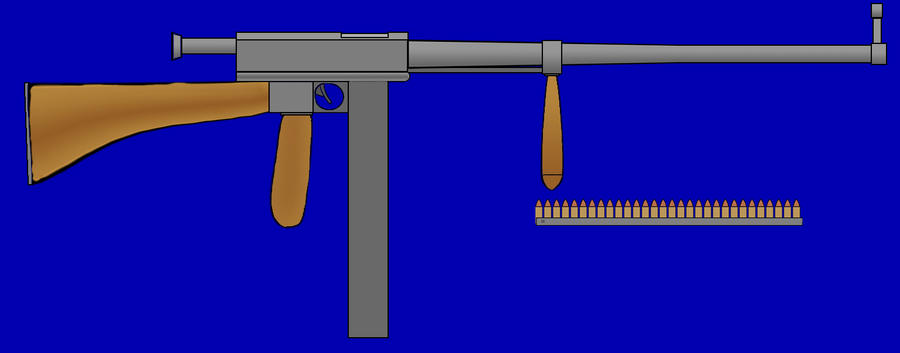
This weapon was designed by the military nation who had just heard about the novel new invention of a sub machine gun and wanted in on that action, as such they quickly commissioned a new weapon and had it put into production. It was fairly reliable, lightweight and did it's intended job quite adequately with a rate of fire of 600rpm. However, among the choices they made for this weapon was a most unorthodox one: instead of using a detachable box magazine, they instead fell back on what worked for their rifles and pistols, namely a fixed magazine which had a stripper clip shoved down it. In total, several hundred thousand of them were made and issued before this nation got caught in a war. There it proved itself useful in urban combat, but their were complications with these guns. First was the matter of dirt, which the clips were quite sensitive to, a fact which could lead to jams. Loading the weapon could be awkward due to stuffing a clip down the top of the weapon into the magazine protruding from the bottom. The enemy adopted a box magazine SMG, which had the advantage of a 75 round drum clip, while the clip fed SMG was limited by design to it's 30 round stripper clips.
The Small Arms committee took note of this and soon decided to introduce a comparable weapon. Feeling that their was no time for an extensive design process, they simply reverse engineered their enemy's guns, rechambering it to their ammunition. The end result was an notoriously unreliable weapon despised by the poor soldiers who were issued it. As such, after a mere year of production it was discontinued and more of the clip fed weapons were produced until the end of the war. At it's conclusion, these weapons became iconic of their state due to their unorthodox design.
Luft '46 needs an armored fighting vehicle counterpart. I thusly dub it "Panzerarmee '46".
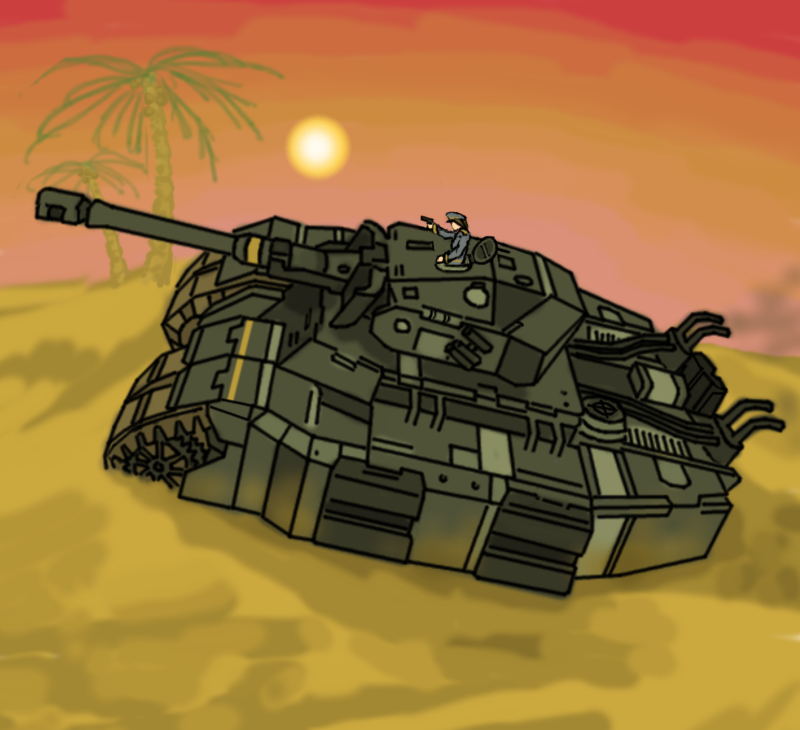

Hapsburg
Banned
I based them, respectively, on the GEKKO units from Metal Gear Solid 4, and the Lhada quad-walkers from Patlabor.The Wolverine is kind of odd, but I really like the Ferret and Puma.
Last edited:
The discussion in regards to the Montana class has reminded me of this beauty. I must restore her.
Here is a cruiser from the Imperial and Royal Navy of the Habsburg Monarchy. Obviously, the Central Powers won the Great War....

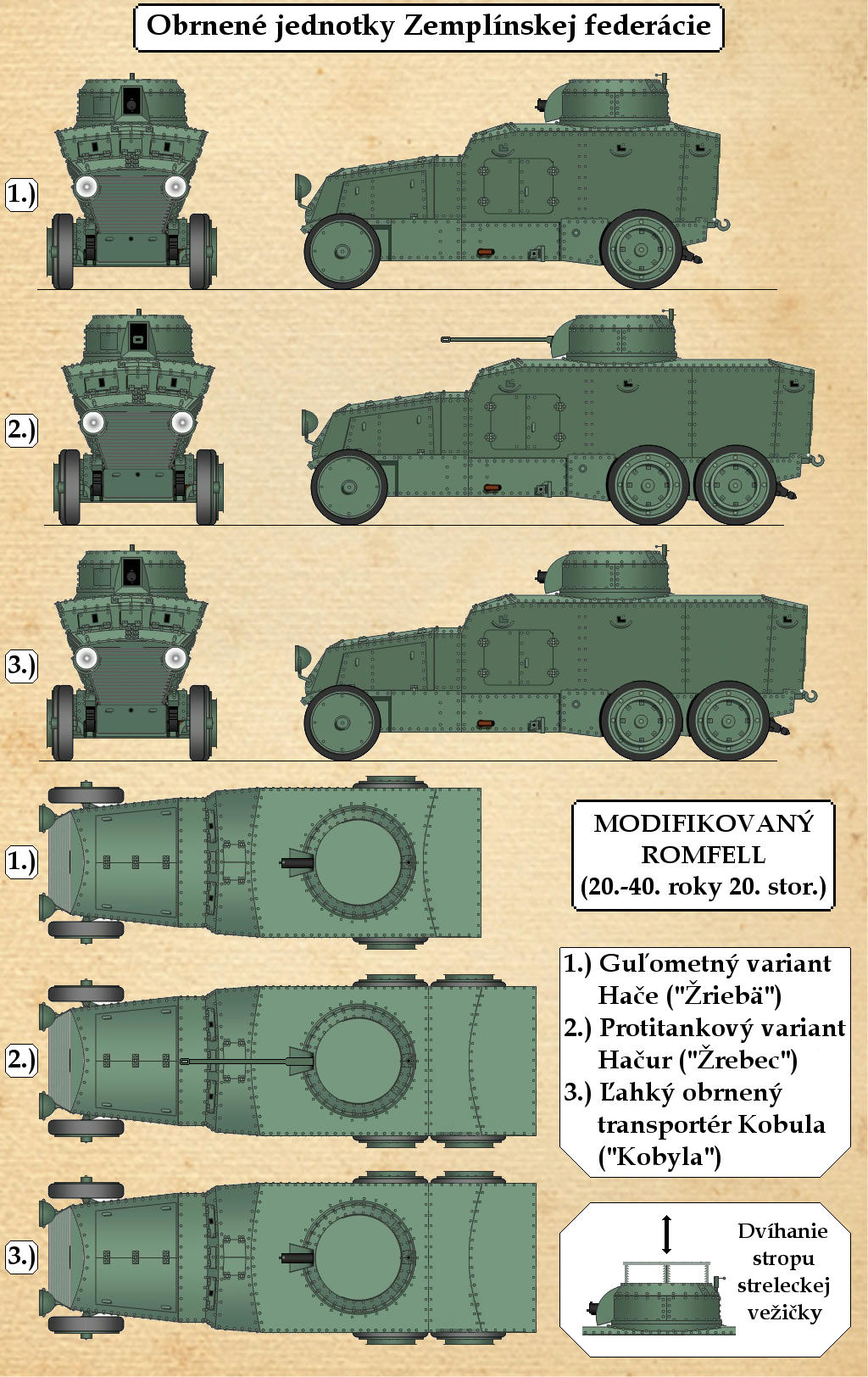
An interwar era vehicle of the Zemplín Federation from my Sparrow Avengers universe.
Since the ATL version of the Austro-Hungarian Romfell armoured car had been produced in plentiful numbers (approaching 120 units), the governments of the Šariš Free State, Zemplín Federation and Kingdom of Galizia commandeered as many leftover units as possible after the collapse of the eastern front late in WWI.
Modifications and addons
The governments soon realized that the vanilla version of the vehicle wouldn't be all that suitable for the needs of their interwar militaries. Furthermore, while a good basic design, the model had several inherent flaws that were in dire need of being adressed by technical tweaking and updating. Maintaining and reproducing some of the more intricate parts and portions of the vehicles would prove too pricy, especially for the strapped-for-cash Šariš and Zemplín militaries. Hence why all of the three countries decided to resort to extensive modifications of all surviving Romfell hulls.
Upgrades of the Romfell common in all three states included:
- Replacement of the original engines for more powerful ones.
- The hull plating was, where possible, slightly thickened.
- The once overly narrow wheels were replaced with far broader, thicker, buffer ones.
- The roof of the turret, originally equipped with a simple and rather unergonomic hatch, was replaced by a static roof that could be raised and lowered by a handcrank-operated mechanism from inside the turret.
- Several variants of the car were created in each country. Every variant was distinctive either by its extended number of wheels, modified hull or by new armaments.
Resulting variants
The image/chart above shows the three variants of the Romfell that were in use among the armoured units of the ZF's armed forces since the 1920s, up until the 1940s. The three variants, codenamed with local dialect terms relating to horses, are the following:
1.) Hače ("Foal") armoured scout car - This variant is the closest to the original Romfell. It is a simple armoured scout car with a single machine gun and a crew consisting of only a driver and gunner. The hind parts of the vehicle were slightly enlarged to allow for a smaller, inexpensive on-board radio.
2.) Hačur ("Stallion") anti-tank armoured car - The most ambitious and creative of the variants, but also the one that was produced the least. It was derived from an experimental prototype, a six-wheeled expansion of the original Romfell. Since the Romfell - vanilla as well as modified - is overall a fairly light armoured car and has a rather small turret, the ZF armed forces made a decision to equip it with heavy anti-tank rifles instead of actual light cannons. While the caliber of these improvised "rifle-cannons" is rather low and they can't pack as much of a punch as a real cannon, they are still adequate for supporting infantry and armoured cars with machine guns against more lightly armoured vehicles (e.g. tankettes, light tanks). The space offered by the expanded hind quarters of the variant are used primarily for housing the on-board radio, a small storage of additional ammo for the AT rifle and the bench of the ammo loader (who also doubles as a radio operator when he's not handing AT bullets to the gunner). The ammo can be loaded into the car through a small single door in the back. This door is also used as an emergency escape hatch for the gunner, in case he doesn't make it to the front doors of the car.
3. Kobula ("Mare") light APC / assault armoured car - This variant came into being as a simpler offshoot of the Stallion six-wheeler. There are only two real differences between the duo: The turret sports a machine gun instead of an anti-tank rifle. Instead of a small storage for AT rifle ammo, the reinforced hind quarters of the car have small benches, able to accomodate up to 4 infrantrymen. Said infantrymen can enter through two doors at the back of the car. The relative spaciousness of the hind quarters also permit the car to carry a bigger and more powerful on-board radio. This means that the car can also be used as an improvised command vehicle, with one or two of the soldiers replaced by a platoon commander and his aide, both sitting near the radio.
Reasons behind the turret hatch modification
I'll just note that there is no longer a top hatch on the turret. The entire roof is a solid single piece, but can be lifted a bit on small rack rails inside the turret, powered by a hand crank. The main reason why they redesigned the original roof was to avoid someone sneaking up on the car, climbing on the turret, opening the hatch and chucking in a hand grenade. The crew of the modified car is in about the same amount of potential danger as the tankette and light tank crews, so having a top hatch wouldn't add much to the survivability. Of course, losing a top hatch makes an escape a bit more involved, but the modified car was never meant to fight tanks head on.
Tactical use of the modified Romfell
Let's reiterate that previous sentence: The Romfell is not intended to directly battle armour larger than light tanks, and certainly not against whole groups of enemy armour. It's unlikely the crew would get stuck in a wreck that engaged armour with far stronger guns, unless the crew of the car wasn't following their training. With the improved wheels and more powerful engine, the car is intended for hit-and-run tactics, rather than direct confrontations with a larger armoured force or infantry force.
Most of the preferred tactics focus on ambushes, especially in rural areas with dirt roads among fields, meadows and the edges of forests. Hiding behind foliage or hedgerows is part of commencing ambushes. The cars coordinate with jaegers and with other light armoured vehicles (sometimes even with mounted troops) to harass the enemy in ambush-advantageous locations. The AT variant (and AT rifle infantry) attempt to harass enemy light armoured vehicles and motor vehicles, while the MG variants (and machine gunners and riflemen) try to attack enemy infantry and mounted troops. The goal isn't an orderly thinning-down of the ranks, but an effort to cause as much confusion, chaos and panic in the invaders as possible, possibly even induce a rout.
(You could say the approach of the Zemplín Federation and many other of the successor states is a bit akin to OTL Finland in the 1940s and during the Cold War, where the main point were not "epic" showboating battles, but smaller, careful and cunning engagements against the invaders, intended to wear them down and cause disarray. Also, here's the placement of the ground forces roundel on the modified Romfells.)
----
Base Austro-Daimler Romfell illustration by Tibor Horváth, 2009 (originally at RegiaMilitariaHungarorum.hu)
Last edited:
Here's some old stuff from my Flickr:
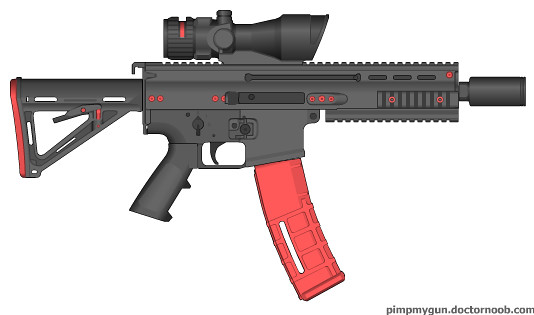
Californian-model Browning Weapon Company Assault Rifle. California Republic special ops carried this snub-nosed gun into battle during the Third Great War and during the Indochina Intervention. Additionally, extras trickled down to terrorists and the forces of the New England Confederation, who then used them in the New England - Pennsylvania War. Basically, red is the color of the Californian Armed Forces.
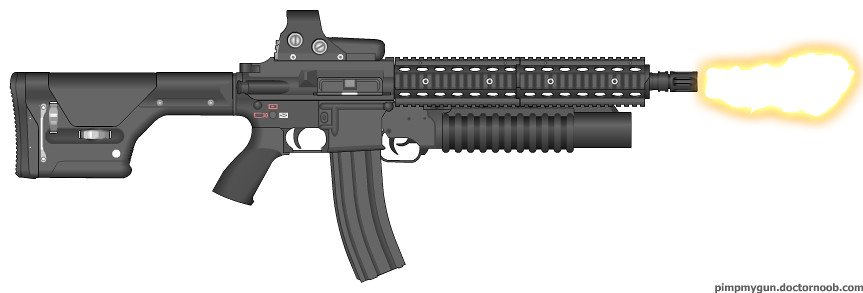
Confederate Heavy Infantry Rifle used during the Indochina Intervention and the Third Great War.
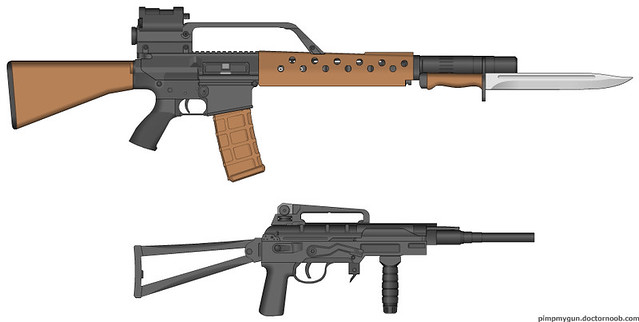
The Confederate AGW-118 "General Lee" and the VGS-41 Grease Gun were weapons used from the Second Great War all the way through the Third. They saw extensive action with the Confederate Expeditionary Force in Indochina and by the Confederate satellite country Pennsylvania, where, making use of these weapons, the state militia overthrew the Federal authorities at the end of the Second Great War. Additionally, California used them after they purchased a massive order to help supply the troops in Vietnam. The top weapon, the C-87, was well-liked and was nicknamed the "General Lee;" the grease gun was favored by Confederate scouts as an easy-to-tote gun that had rapid-fire capability.

Californian-model Browning Weapon Company Assault Rifle. California Republic special ops carried this snub-nosed gun into battle during the Third Great War and during the Indochina Intervention. Additionally, extras trickled down to terrorists and the forces of the New England Confederation, who then used them in the New England - Pennsylvania War. Basically, red is the color of the Californian Armed Forces.

Confederate Heavy Infantry Rifle used during the Indochina Intervention and the Third Great War.

The Confederate AGW-118 "General Lee" and the VGS-41 Grease Gun were weapons used from the Second Great War all the way through the Third. They saw extensive action with the Confederate Expeditionary Force in Indochina and by the Confederate satellite country Pennsylvania, where, making use of these weapons, the state militia overthrew the Federal authorities at the end of the Second Great War. Additionally, California used them after they purchased a massive order to help supply the troops in Vietnam. The top weapon, the C-87, was well-liked and was nicknamed the "General Lee;" the grease gun was favored by Confederate scouts as an easy-to-tote gun that had rapid-fire capability.
Here's a new one I just made. Don't hate on it; I know next to nothing about how guns work.  This was solely intended for fun.
This was solely intended for fun.

Here's a new one I just made. Don't hate on it; I know next to nothing about how guns work.This was solely intended for fun.
It looks like a Star Trek "LEGO Phaser Rifle" (as SFDebris would say), remade into a WWII era gun.
@Fen: Dang, that's impressive.
Lol, it does kinda.
Lol, it does kinda.
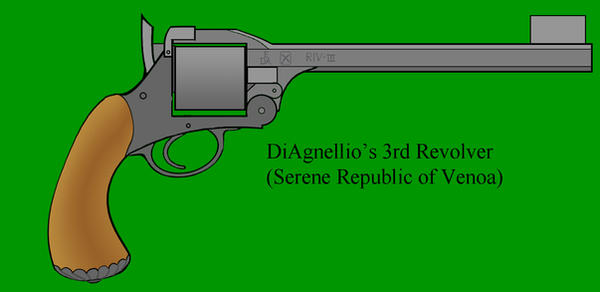
Another creation of the Venoan inventor Ermete DiAgnellio, his Third Revolver was first completed in early 34 IA and being put into production soon after. The weapon was designed as much as a proof of concept as much as anything. Having sucessfully designed a pair of precussion revolvers and paper cartridge weapons, DiAgnellio was interested in the metallic cartridges used by the Infrastructurals. This weapon was designed to accomidate an 0.45 Uncia (11.07mm) experimental metallic rimfire cartridge and had six chambers with a top break opening.
The weapon preformed adequately in various test firings and was met with the approval of the Doge. That said, after it's introduction production was fairly slow. Not because the weapon was praticularly difficult to manufacture, but because the ammunition was. While linen and paper cartridges for his rifles could be made fairly easily by hand, metal cartridges needed to be drawn. This weapon was, in fact made possible by by his colleague Marino DiTelisica who had been working on the matter of drawing machines for several years, as well as some information taken by spies from infrastructure on the subject. The process to get a working system involved numerous failed prototypes before a decently reliable system was devised. Despite that it was still an early model, having a fairly low production output and requiring a lot of attention to maintain by skilled artisans. This as well as the fact that they had to build everything from scratch (and unlike Infrastructure's developments, having no assistance from the Committee and it's Fabrication equipment) led to a low output of ammunition which cost eight to ten times as expensive as the comprable (if lower power) Infrastructural 10x20mm round. A few weapons were sold to the Doge and others were sold to wealthy figures, but production was limited to a couple dozen weapons per month for several years after it's introduction. One of which was sent to the Central Committee of Infrastructure by the Doge.

In the early stages of the history of Infrastructure close quarters weapons, while extensively used, were not mass produced on standardized lines. During the wars of unification, a miss match of old swords as well as maces, axes and similar weapons were used for close quarters fighting. These were either made before infrastructure's arrival or made by blacksmiths in a largely non industrial manner. Gradually this changed, starting with the introduction of a regulation cavalry lance and eventually the introduction of mass produced bladed weapons.
The most common Infrastructural bladed weapon is the Model-2 Sword bayonet. Introduced in 29IA it has a blade 30cm long and unlike bayonets used by other powers, can serve as a serviceable dagger. It can be affixed to both the Type-3R and Type-4R rifles. It differs from the Model-1 Sword Bayonet in that it the guard, in the Model-1 it was a flat and in the model-2 it has a slight curve to parlay enemy blows. The Model-3 General Purpose Sword is a less common artifact, but is still is produced in fairly large numbers. A cutlass style weapon it is issued to cavalrymen, sailors, officers as a sign of authority and a reserve is kept in use for a certain
Mechanized assistance in production has made these weapons easy to manufacture. That said, they are generally of lackluster quality when compared to other weapons of similar size made outside of Infrastructure, even those of a mundane nature. This is not considered important by the Central Committee or the top brass of the Infrastructural military, who see these weapons as being at best a secondary consideration compared to firearms. This has not stopped an export of these weapons as a means of building up capital, though their main selling point is their low cost per unit.
Last edited:
That's pretty neat what is the base image of that from?
No base image, made from scratch in photoshop.
Zor
Share:
